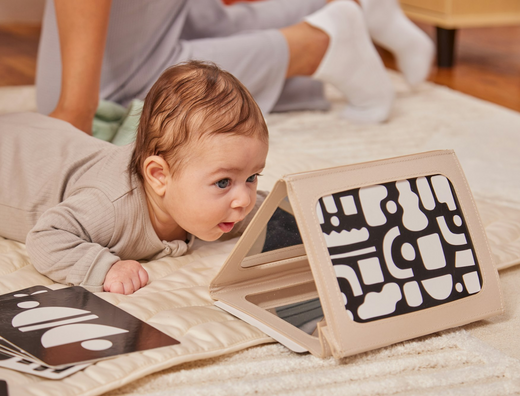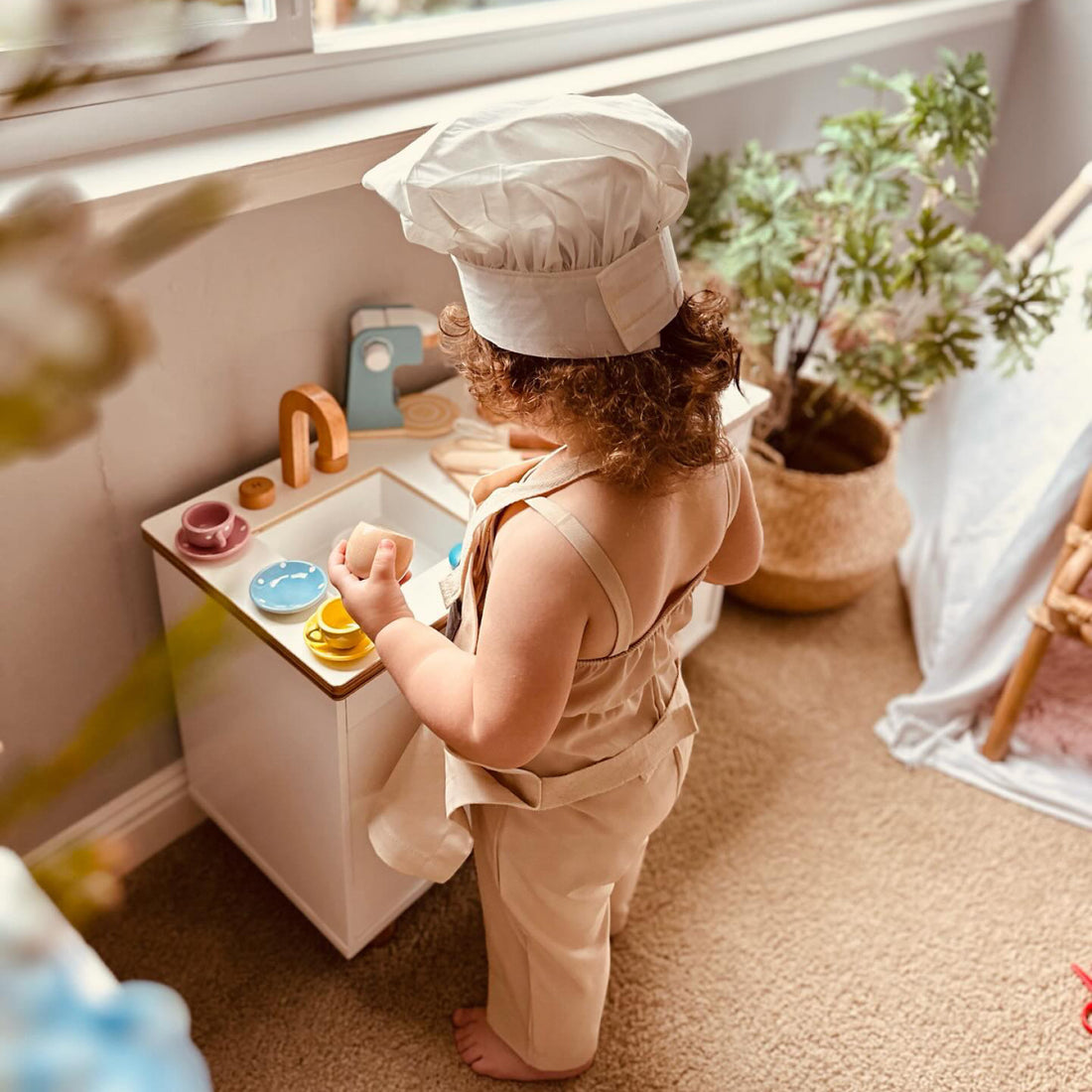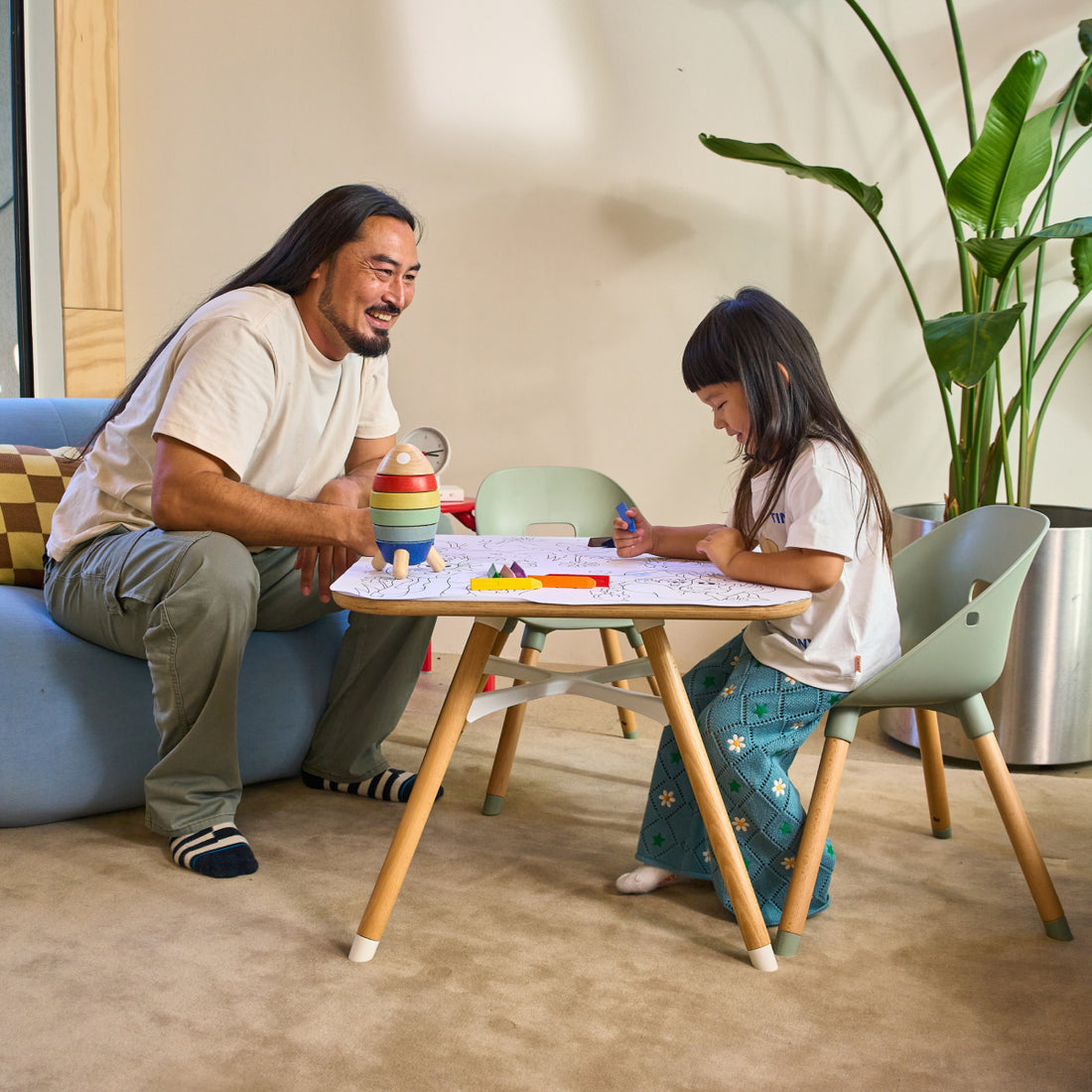Why is tummy time important?
Giving babies the freedom to “play” independently in a safe space on the floor helps foster cognitive and motor development. For younger babies, these “play” experiences start with kicking, moving their head, and wiggling around. These early movements are the beginning of skills needed to learn to roll, crawl and eventually walk. With the help of intentional toys, they’ll also start to reach, visually track objects, and develop hand-eye coordination.

Tummy Time Q&A:
When should my baby start tummy time?
-
Newborn babies can start doing tummy time as soon as they come home! Babies who start tummy time earlier tend to tolerate it better later on.
How long and often should I do tummy time each day?
-
For newborns, try starting a few minutes at a time, about two to three times a day. As they get more comfortable, continue doing small sessions several times a day, eventually building up to at least an hour total per day. Tummy time can be tough, so be patient and know it's okay to break it up.
Where should I do tummy time?
-
Lay your baby on a firm, flat surface like a play mat or play gym spread on the floor. Avoid beds or soft cushions to prevent any risks. This will be their safe space to explore and learn!

Tips for tummy time
-
Help your baby into tummy time by slowly rolling or laying them belly-down with their arms bent and tucked under their shoulders.
-
Newborns will often lie on their bellies with their head to one side. Periodically move your baby’s head to rest on the opposite side. While they’re looking to the side, you can set up the Mirror Prism so they can see their own face (babies are fascinated by faces!)—this will also help distract them.
-
Use the Sensory Ball (it has a hidden bell inside of it) to move in front of your baby’s field of vision to encourage head lifting and turning. They’ll visually track the noise and follow the toy with their eyes.
-
Place high contrast Art Cards in front of your baby so they can work on building neck strength by lifting their chin.
-
As your baby gets stronger, place their hands under their chest and tummy, using gentle lifting cues to get them to push up on their hands for brief periods of time.
-
Encourage your baby to roll, reach, and move by placing toys around them as motivation.
-
Incorporate tummy time into routines. Do tummy time after diaper changes, baths, or naps when your baby is awake and content.
-
It may take your baby a little extra time to get used to tummy time. Be patient, try different things, and remember that you’re helping your baby develop important skills that will last a lifetime!














